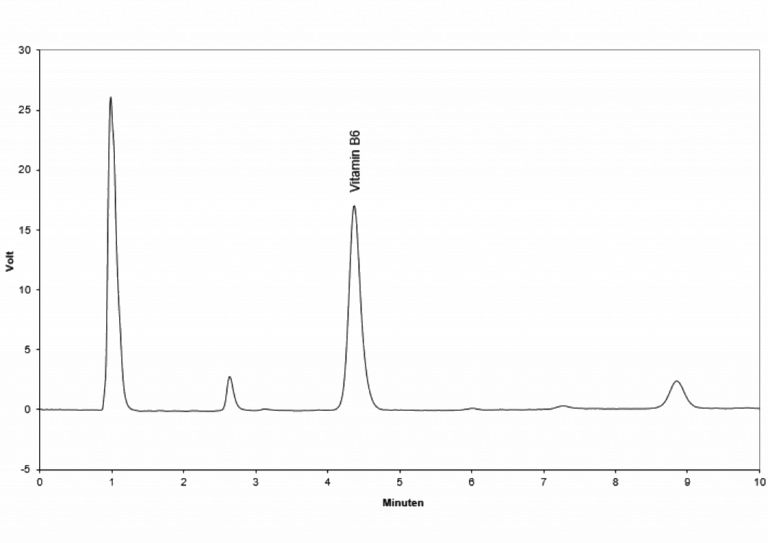Vitamin B6
The vitamins pyridoxin, pyridoxal and pyridoxamin and the appropriate phosphate products are summarized as vitamin B6. All forms can be transformed into the active form pyridoxal-5-phosphate.
Vitamin B6 functions as a coenzyme and is essential for more than 50 reactions in the protein, carbohydrate and fatty acid metabolism thereby synthesizing, transforming or degrading amino acids. In protein metabolism vitamin B6 supports the resorption of amino acids and their transport into the cells. Furthermore vitamin B6 contributes to the synthesis of neurotransmitters and amine products (histamine).
Due to the fact that vitamin B6 contributes to a variety of different reactions lack of vitamin B6 results in various clinical pictures as muscle dystrophia, skin diseases, disturbance of the nervous system. High risk groups for reduced vitamin B6 concentrations in serum are lactating women, women taking oral contraceptiva with high amount of estrogen and chronic drinkers.
Technical data
Sample EDTA-plasma, serum
Sample volume 200 µl
Detector Fluorescence Ex. 320 nm Em. 415 nm
Method isocratic
Determinations 100
Ordering Information
IC2100 Testkit
IC2100ko Controls (2 level each 250 µl lyoph.)
IC2100rp HPLC column

Principle of the method
For the determination of vitamin B6 a precipitation step to remove high molecular substances is performed first. After centrifugation the supernatant is mixed with a derivatisation solution and incubated for 20 min at 60°C. The fluorescent probe is then cooled (2-8°C), centrifuged and injected into the HPLC system.
The isocratic separation via HPLC at 30°C lasts 10 minutes. The chromatograms are recorded by a fluorescence detector. The quantification is performed with the delivered plasma calibrator; the concentration is calculated via integration of the peak heights respectively areas.